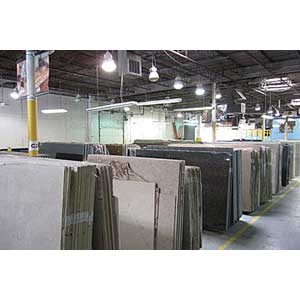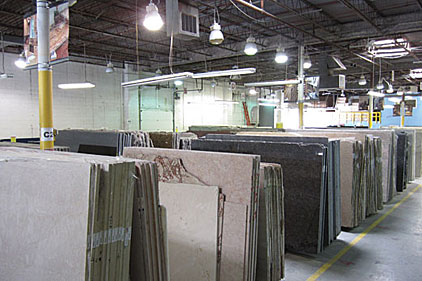
There is no doubt that fabricator importing is on the rise. Importing by the fabricator can take many avenues — from jumping in to the fray alone, to hiring a broker, to importing through their existing network of distributors. Once everyone involved — suppliers, fabricators and distributors — realizes the nature of the beast of importing, it becomes a more palatable team effort. Profits need to be made by everyone involved; otherwise, what is the point? The level of those profits is what is up for debate. Obviously, the more profits (or savings) wanted, the more work that must be done in-house, no matter what house you are in.
The main reason to import is to save money and make more profit. This can be realized in the form of lower prices, less waste and/or better sales practices. The importing process can take place in a range of forms, each of which has its own benefits.
Fabricator/Distributor
The first container I ever imported directly to our facility was purchased through our regular supplier/distributor. It was a very good discount to us, as opposed to buying single slabs as jobs came in for production. The advantage to the distributor was that: it helped him balance the ups and downs of his inventory, lessened his overall operating expenses (no unloading, unbundling, inventorying, loading, delivery, making 20 trips, etc). It was all paperwork for him, no physical expenses except the existing overhead. This also kept our company in the fold as a customer for slabs we did not import, which we bought at a higher price because of the added expense to the distributor. The distributor did not necessarily make more profit, as they have more expenses. Another mid-step to importing is to commit to buy several bundles from the distributor and have them delivered at regular intervals. This helps the distributor to even out his ordering, and to save money on consolidated deliveries. It helps the fabricator in many of the ways that importing does — better yields, less waste, controlled cash flow, etc.
Fabricator/Broker
As our appetite for more variety grew faster than our ability to import single-color containers, brokers were sought out. Brokers are middle men of sorts, in that they have many contacts in the manufacturing sector of the industry. Each works in the same general way, although all are a little unique in their specialties. Brokers can assist in many ways, and they are a worthwhile step in the importing process, especially for new importers. Brokers provide a great service, but they do earn a portion of the savings. It is a good deal for all involved.
Fabricator/Processor
As relationships develop (and the Internet brings people closer together), there is opportunity to purchase directly from the plant that cuts the blocks and polishes the slabs. The communication is easy and instantaneous with the Internet, Skype, etc. It is more work for the fabricator, so the savings can be more substantial.
It is important to understand that there are some hidden costs in importing, namely the cost of having money sitting around in the form of inventory. These carrying costs can be accounted for in many ways. Each financial situation is different, so consult with your banker or adviser.





